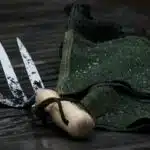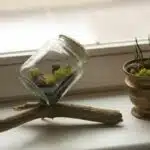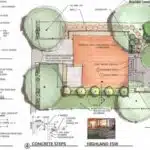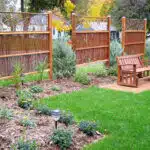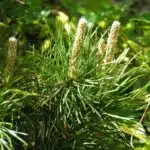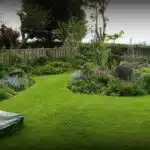The creation of miniature gardens, also known as fairy gardens, has become increasingly popular among garden enthusiasts. These tiny landscapes offer a whimsical escape from reality and allow for creativity and imagination to flourish. Creating a fairy garden is not only an enjoyable pastime but can also serve as a therapeutic activity.
A successful fairy garden requires careful planning and attention to detail. Although it may seem daunting at first, the process can be broken down into six easy steps that will lead to the creation of an enchanting miniature world. By following these steps, you can create a magical space that encourages relaxation and imagination while serving as a beautiful addition to your outdoor or indoor space.
Choosing A Location For Your Fairy Garden
When creating a fairy garden, the first step is to choose a location that suits your needs. You can create an outdoor or indoor fairy garden depending on your preference. An outdoor fairy garden will require more attention to the weather conditions, while an indoor one will need adequate lighting and ventilation. Choose a location that receives enough sunlight for your plants and provides easy access for watering and maintenance.
The next step is to select the right plants for your location. Consider the climate of your area, soil type, and available space when choosing plants for your fairy garden. Plants such as succulents or ferns are great options for indoor gardens as they do not require much water or sunlight. In contrast, outdoor gardens can accommodate various plant species depending on their light and moisture needs.
To make the most of your fairy garden, it’s essential to choose a location that complements its surroundings. Whether you opt for an indoor or outdoor garden, selecting the right plants is crucial in ensuring its success. By taking time in this initial phase of planning, you’re setting yourself up for a thriving and visually appealing fairy garden experience. In selecting the right container section we’ll discuss how to find the perfect container to bring your fairy garden vision to life.
Selecting The Right Container
Choosing the right container is crucial in creating a successful fairy garden. The size and material of the container will determine the type and number of plants that can be used, as well as the overall aesthetic of the miniature landscape. When selecting a container, consider the size of your outdoor space and how much maintenance you are willing to commit to. For smaller spaces or those with limited sunlight, a small container may be more appropriate, while larger containers can accommodate a greater variety of plants and features.
Material is another important factor when choosing a container for your fairy garden. Terracotta pots are popular for their affordable price and classic look, but they may not hold up well in freezing temperatures. Plastic containers are lightweight and durable, making them a great option for those who live in areas with harsh weather conditions. Metal containers add an industrial touch to your garden but can heat up quickly in direct sunlight.
If you’re looking for alternative container options, consider repurposing old items such as wheelbarrows, teapots, or even boots! These unique containers can add character to your fairy garden while also being environmentally friendly. Just be sure to make drainage holes if necessary and clean out any debris before planting.
When selecting the right container for your fairy garden, take into account both practicality and aesthetics. The size and material of the container should suit your needs while also complementing the overall design of your miniature landscape. With so many options available, it’s easy to find a container that will fit perfectly into your outdoor space. In gathering materials for your miniature landscape, keep in mind the theme you have chosen for your fairy garden and how each item will contribute to its overall charm.
Gathering Materials For Your Miniature Landscape
Gardening supplies, such as soil, moss, and gravel, are essential for building a miniature landscape. Careful selection of plants and other elements, like rocks and figurines, will add dimension and texture to the landscape. Fairy accessories, such as tiny furniture, miniature signs and decorations, will create a whimsical atmosphere in the landscape. Finally, consider using solar lights or LED lights to add a magical touch to the miniature landscape.
Gardening Supplies
When it comes to creating a fairy garden, gathering materials is the first step in bringing your miniature landscape to life. Gardening supplies are essential in completing this process, but where can you find them? Luckily, there are a variety of options available for both online and local stores.
Online options provide convenience and accessibility when searching for gardening supplies. Online retailers offer a vast range of products that can be delivered straight to your door. These resources allow you to browse through an extensive selection of miniature plants, decorations, and other accessories from the comfort of your own home. However, it is important to note that shipping costs and delivery times may vary depending on your location.
Local stores are another great option when looking for gardening supplies. Visiting a local nursery or garden center allows you to see and touch the items before purchasing them. Additionally, local stores often have knowledgeable staff who can provide expert advice on selecting the right plants and decorations for your fairy garden. By shopping locally, you also support small businesses in your community.
Overall, gathering gardening supplies is an essential part of creating a fairy garden. Whether you choose to shop online or visit local stores, there are plenty of options available to help bring your miniature landscape vision to life.
Fairy Accessories
When it comes to creating a fairy garden, gathering materials is crucial in bringing your miniature landscape to life. Apart from gardening supplies, fairy figurines and miniature furniture add the finishing touches that make your garden enchanting. These accessories bring a sense of whimsy and fantasy to your creation, making it feel like an enchanted oasis.
Fairy figurines come in various shapes, sizes, and designs, making them perfect for any type of fairy garden. They can be placed strategically throughout the landscape to create a whimsical atmosphere that will transport you to a magical world. Miniature fairies can be paired with flowers or other plants to give the impression that they are interacting with nature.
Miniature furniture is another essential accessory for any fairy garden. It provides a sense of scale and adds realism to the overall design. Furniture pieces such as benches, tables, and chairs create cozy spots where visitors can sit and enjoy the scenery. When choosing furniture pieces, it’s important to consider the style and theme of your garden.
In conclusion, adding fairy figurines and miniature furniture is an excellent way to enhance the magic and enchantment of your fairy garden. With these accessories, you can create a unique space that transports you into an imaginary world filled with wonder and delight.
Creating A Base Layer For Your Fairy Garden
The base layer of your fairy garden is crucial to its overall aesthetic appeal and longevity. One way to create a realistic base layer is by using natural materials such as stones, twigs, and moss. These provide a natural-looking bed for your miniature plants and accessories. Consider using pebbles or gravel for drainage purposes.
Choosing the right ground cover can also make a significant difference in the appearance of your fairy garden. Mosses, sedums, and thyme are great options for ground covers because they can tolerate the dry environment of a container garden. They also come in various shades of green, which adds depth to your miniature landscape.
To create an engaging and visually appealing fairy garden, focus on creating a naturalistic look with contrasting textures and colors. Be mindful of the size of your plants and accessories so that they do not overpower the space. A well-designed fairy garden should be balanced, with each element complementing one another.
With a naturalistic base layer established using stones, twigs, mosses, and other organic material as well as carefully selected ground coverings such as mosses or sedums, you can move on to adding soil and plants to your miniature garden. This next step will allow you to bring life to your creation and create an enchanting world that captures the imagination of all who see it.
Adding Soil And Plants To Your Miniature Garden
- Prior to planting a miniature garden it is essential to prepare the soil by ensuring it is loose and well drained, while also allowing for adequate access to water and nutrients.
- A combination of potting soil, vermiculite, and compost is recommended to create an optimal soil environment for plants.
- Once the soil is properly prepared, plants can be selected based on their individual needs and the desired aesthetic of the garden.
- When planting, it is important to keep in mind the mature size of the plants, as well as the amount of light and water they require, to ensure the plants are able to thrive in the miniature garden.
Preparing The Soil
Preparing the soil is a crucial step in creating a successful fairy garden. The first thing to consider is the type of soil you’ll be using. Fairy gardens thrive in well-draining soil, so it’s important to avoid heavy clay soils that retain water and can cause root rot. Instead, opt for a lightweight potting mix that contains perlite or vermiculite to improve drainage.
To give your fairy garden plants the best chance of success, consider adding compost to your potting mix. Composting has numerous benefits for plant growth, including improving soil structure and increasing nutrient availability. You can make your own compost by collecting organic waste like food scraps and yard trimmings, or purchase pre-made compost from a garden center.
When it comes to fertilizers for your fairy garden, there are numerous options available. Consider using an all-purpose liquid fertilizer that provides balanced nutrition for your plants. Alternatively, slow-release fertilizers can provide nutrients over an extended period of time, reducing the need for frequent applications. Whatever type of fertilizer you choose, be sure to follow the manufacturer’s instructions carefully and avoid over-fertilizing which can damage your plants’ roots.
Planting Your Garden
Now that you have prepared the soil, it’s time to start planting your DIY fairy garden. Plant selection is crucial in creating a visually appealing and thriving miniature garden. Consider choosing plants that are proportionate to the size of your container and complement each other in terms of color, texture, and growth habit.
When selecting plants for your fairy garden, choose those that prefer similar growing conditions such as light requirements, water needs, and soil type. It’s best to choose plants that are easy to care for and don’t require frequent pruning or fertilizing. Some popular choices for fairy gardens include miniature roses, succulents, herbs like thyme or oregano, and small ferns or ivies.
To plant your garden, begin by placing the largest plants first and then work towards filling in any gaps with smaller plants or accessories like stones or miniature figurines. Be sure not to overcrowd your container as this can lead to poor air circulation and disease. Once all of your plants are in place, give them a good watering and continue to monitor their progress over time. With proper care and attention, your fairy garden will provide a whimsical escape for both you and your guests to enjoy!
Choosing The Perfect Fairy Garden Accessories
When it comes to creating a fairy garden, the accessories you choose can make all the difference. Fairy garden figurines are a popular choice for many, as they add a touch of whimsy and magic to the garden. There are many different types of fairy figurines available, from traditional fairies to more modern designs. Choose ones that fit your personal style and theme of your garden.
If you want to save money or personalize your fairy garden even further, consider making your own DIY fairy garden accessories. This can be a fun and rewarding project for both adults and children. You can use natural materials such as acorns, twigs, and stones to create miniature furniture or decorations for your fairy garden. You could also repurpose household items like bottle caps or old jewelry to create unique accessories.
No matter what type of accessories you choose for your fairy garden, it is important to keep in mind the overall design aesthetic. You don’t want the accessories to clash with each other or with the plants in your garden. Stick with a consistent color palette and theme throughout the entire design. By doing so, you’ll create a cohesive and enchanting space that will delight both young and old alike.
As you begin incorporating natural elements into your design, keep in mind that there are endless possibilities when it comes to creating a magical fairy garden. From moss-covered walkways to tiny bird baths made from shells – let nature inspire you as you design the perfect space for fairies to call home!
Incorporating Natural Elements Into Your Design
As you build your fairy garden, it’s essential to incorporate natural elements that add texture and depth to your design. Using found objects like rocks, twigs, and driftwood can give your garden a rustic feel while creating a sense of magic. By strategically placing these elements around your fairy garden, you can create pathways, miniature benches or tables, and even tiny ponds for fairies to play in.
Incorporating edible plants into your fairy garden design is another way to add interest and functionality. Herbs such as thyme and mint not only smell good but also attract pollinators like bees and butterflies to your garden. You could also plant small fruits like strawberries or blueberries that will provide tasty treats for both humans and fairies alike.
Overall, incorporating natural elements into your fairy garden design is an excellent way to create a magical space that feels authentic and inviting. Using found objects adds character while edible plants serve both form and function. In the next section, we’ll explore how to create a focal point in your fairy garden that will draw the eye and add an extra touch of enchantment.
Creating A Focal Point For Your Fairy Garden
Incorporating natural elements into your fairy garden design can be a great way to enhance its overall appeal. However, it’s equally important to create a focal point that captures the attention of anyone who comes across your miniature landscape. One way you can do this is by incorporating DIY fairy garden centerpieces. These centerpieces can range from small birdhouses or lanterns to larger structures like arbors or gazebos.
Fairy garden figurines are also an excellent way to add personality and charm to your design. You can use them to create scenes or tell stories within your mini garden. Consider placing a fairy on a swing or having a group of fairies gathered around a table for tea. The possibilities are endless, and there are many different types of fairy garden figurines available in various shapes, sizes, and materials.
When adding centerpieces and figurines to your fairy garden, it’s important to ensure that they don’t overwhelm the space or distract from the natural elements you’ve incorporated. Use them sparingly and strategically, placing them in areas where they’ll be noticed without taking away from the overall aesthetic of your design. With these tips in mind, you’ll be able to create a stunning fairy garden that captures the imagination and delights all who see it.
As you continue building your miniature landscape, consider adding water features like fountains or ponds. Not only do these elements add visual interest and texture, but they also provide sound effects that further enhance the ambiance of your fairy garden. Whether you choose a simple birdbath or an elaborate waterfall feature, incorporating water will bring new life to your design and create an even more enchanting environment for both fairies and humans alike.
Adding Water Features To Your Miniature Landscape
- When selecting a water feature for your miniature landscape, consider the style, size, and budget that is most suitable for your garden.
- Additionally, it is important to evaluate the type of water feature that is best suited for the plants and animals that inhabit your miniature landscape.
- Installing a water feature into your miniature landscape will require some basic plumbing knowledge and the right tools to ensure proper installation.
- Careful consideration should be given to the source of the water, the environment around the water feature, and the materials used when installing the water feature.
Choosing A Water Feature
Adding a water feature to your miniature landscape can bring a sense of tranquility and beauty that is unmatched by any other element. Choosing the right water feature can transform your fairy garden into a serene oasis of peace and calm. One important aspect to consider when selecting a water feature is its placement within the garden.
Water feature placement is crucial in creating the perfect ambiance in your miniature landscape. A well-placed water feature can enhance the beauty of your fairy garden, while an improperly placed one can detract from its overall appeal. When deciding on the placement of your water feature, take into account factors such as sunlight exposure, wind direction, and proximity to other elements like plants and trees.
For those who want to add a personal touch to their fairy garden, DIY water features are an excellent option. Not only do they offer endless possibilities for creativity, but they also allow you to customize your garden according to your own unique vision. There are many DIY water feature ideas out there that are easy to execute and require minimal materials. From rock fountains to mini ponds, there’s no shortage of inspiration for those who want to create their own magical water features.
Remember that adding a water feature is just one way to enhance the beauty of your miniature landscape. With careful consideration of factors like placement and DIY options, you can create a stunning fairy garden that will delight and enchant all who see it.
Installing A Water Feature
Adding a water feature to your miniature landscape can elevate its aesthetic appeal and create a calming environment. However, installing a water feature requires careful planning to ensure that it is efficient, functional, and sustainable. To begin with, you need to consider the size and type of water feature that is suitable for your garden’s scale and theme. Installing a DIY water feature may be an exciting project, but you must also take into account water conservation tips to avoid wastage.
When installing a water feature, location is vital in achieving balance and harmony in your fairy garden. A poorly placed water feature can disrupt the overall design of your garden and lead to maintenance issues such as debris accumulation or algae growth. Therefore, choose an area that receives adequate sunlight exposure and is shielded from strong winds that can cause evaporation or splashing. Also, consider the proximity of other elements like plants, trees and walkways to ensure accessibility for maintenance purposes.
Finally, before installation, decide on the method of powering your water feature. You can choose from solar-powered pumps or electrical pumps connected to outlets depending on your preference. Ensure that you follow safety guidelines when working with electricity or consult an expert if necessary. By following these tips for installing a water feature in your miniature landscape, you can create a beautiful addition that will enhance the ambiance of your garden while promoting sustainability practices.
Creating A Pathway For Your Fairies To Wander
A fairy garden is not complete without a pathway for the fairies to wander along. Creating a natural-looking and inviting pathway is easy with the use of stones. Choose small, flat stones that vary in size and color for a more authentic look. Lay them out in a winding pattern to create an interesting path that leads to different parts of your fairy garden.
To add color and texture to your pathway, consider planting flowers along the edge. Low-growing varieties like creeping thyme or sweet alyssum work well and add pops of color throughout the season. Be sure to leave enough space between the stones for the plants to grow and spread. This will give your fairy garden a more lush and full appearance.
Incorporating a meandering stone pathway with colorful flowers creates an enchanting atmosphere perfect for any fairy garden enthusiast. Not only does it provide practicality by allowing easy access through the garden, but it also adds aesthetic value through its natural elements. The combination of stone and floral textures gives off a sense of tranquility that allows anyone who walks through it to forget their worries momentarily and immerse themselves in its beauty. Continue adding touches like these to make your fairy garden more magical – next up, lighting!
Adding Lighting For A Magical Touch
After creating a pathway for your fairies, the next step is to add lighting for a magical touch. The right lighting can transform a fairy garden into an enchanting wonderland, especially at night. DIY lighting options are available for those who want to create their own unique lighting fixtures. These can be made from recycled materials or purchased from craft stores.
When considering lighting options for your fairy garden, keep in mind the ambiance you want to create. Soft, warm lights can provide a cozy and welcoming feel, while brighter lights can make the garden more vibrant and energetic. String lights are a popular choice for fairy gardens as they provide both softness and brightness. Solar-powered lights are also popular as they are eco-friendly and require no electricity.
Creating a nighttime ambiance with lighting is an important element in maintaining the magic of your fairy garden. Whether using DIY options or store-bought fixtures, it’s important to ensure that the placement of each light enhances the beauty of your garden without overwhelming it. With proper lighting, your fairy garden will become a mystical oasis that provides joy and wonder every time you step outside.
Maintaining Your Fairy Garden
- To maintain a fairy garden, regular watering is essential to ensure the health of the plants.
- Pruning should be done with careful attention to the specific needs of the various plants in the garden.
- Proper pruning techniques should be employed to ensure the plants in the fairy garden retain their desired shape and size.
- To maximize the health of the plants, it is important to ensure that all of the garden’s components are given the correct amount of water, light, and nutrients.
Watering
To properly water your fairy garden, it is important to establish a consistent schedule. Fairy gardens require regular watering to maintain their health and beauty. Depending on the type of plants in your garden, you may need to water daily or every other day. Start by checking the soil moisture level before watering. If the soil feels dry, it’s time to water.
Preventing overwatering and underwatering in your fairy garden is critical for successful growth. Overwatering can lead to root rot and suffocate your plants while underwatering can cause dehydration and stunted growth. To prevent overwatering, choose well-draining soil and ensure proper drainage in your container. Avoid letting excess water sit in the saucer or tray beneath the pot. To prevent underwatering, check your plants regularly for signs of wilting or drooping leaves and adjust your watering schedule accordingly.
Properly maintaining a fairy garden requires attention to detail when it comes to watering. By establishing a consistent schedule and preventing both overwatering and underwatering, you can keep your fairy garden healthy and thriving. Remember that each plant has specific needs so be sure to research their individual requirements for best results. With these tips in mind, you’ll be able to enjoy a beautiful fairy garden all season long!
Pruning
Maintaining Your Fairy Garden requires more than just watering it regularly. Pruning techniques are also necessary to keep your fairy garden healthy and flourishing. Pruning involves removing dead, damaged or diseased plant parts to promote new growth and enhance the overall appearance of your fairy garden. It is a crucial part of maintaining a beautiful and healthy garden. In this article, we will discuss the benefits of pruning for a fairy garden and some simple pruning techniques that you can use.
Pruning has several benefits for a fairy garden. By removing dead or damaged parts, you reduce the risk of disease and pests spreading to other plants in your garden. It also helps to control the size of your plants while promoting new growth, which leads to healthier and bushier foliage. Regular pruning also helps to maintain the shape and aesthetic appeal of your fairy garden.
There are several pruning techniques that you can use in your fairy garden, depending on the type of plant you have. One technique is called pinching, which involves using your fingers or pruners to remove the tips of stems or leaves. This method promotes bushier growth by encouraging lateral branching. Another technique is called heading back, where you cut back one-third of the stem’s length to encourage new growth below the cut area. Always ensure that you sterilize your pruning tools before using them to prevent spreading diseases from one plant to another. By incorporating these simple pruning techniques into your routine maintenance schedule, you can help keep your fairy garden thriving all season long!
Troubleshooting Common Issues
A fairy garden is a place of wonder and enchantment, but it can also be the source of frustration when pests invade. Dealing with pests in your fairy garden can be a challenge, but there are ways to prevent them from wreaking havoc. One effective way is to choose plants that naturally repel insects, such as lavender or rosemary. Another method is to use organic pest control solutions that won’t harm your plants or the environment.
Choosing the right fairy figurines for your garden can also be a tricky task. It’s important to select figurines that complement the overall theme and style of your garden. Opt for figurines made from durable materials like resin or metal, which will withstand weather conditions and last longer. Also, consider the size of the figurines in relation to the plants and other elements in your garden, so they don’t overpower the design.
Incorporating these tips into your fairy garden design will help you avoid common issues and ensure a beautiful and thriving space for fairies to frolic. With proper care and attention, your fairy garden will serve as a peaceful retreat for yourself and others to enjoy. Sharing your fairy garden with others can foster a sense of community and inspire others to create their own magical spaces filled with wonder and joy.
Sharing Your Fairy Garden With Others
Once you have created your fairy garden, it’s natural to want to share it with others. Sharing tips can help others create their own enchanting gardens, while also fostering a sense of community among fellow fairy garden enthusiasts. Consider hosting a workshop where you can teach others how to make their own fairy gardens or participate in community events that showcase the beauty and creativity of these magical spaces.
One way to share your fairy garden is by hosting a workshop. You can invite friends, family, and neighbors over for an afternoon of creating and sharing tips on how to make stunning fairy gardens. You could provide materials such as miniature plants, tiny figurines, and other decorative elements that participants can use to build their own gardens. This is an excellent opportunity to inspire others and cultivate a sense of community around these whimsical creations.
Another way to share your love of fairy gardens is by participating in community events. Many cities host fairs or festivals where individuals can display their unique creations for all to see. Not only does this provide inspiration for your next project, but it also allows you to connect with other people who are passionate about creating beautiful outdoor spaces. By sharing your fairy garden with others, you may even inspire someone else to create their own magical oasis.
Transition: Now that you know how to share your fairy garden with others through workshops and community events, let’s explore some ways you can find inspiration for your next enchanting project.
Finding Inspiration For Your Next Fairy Garden Project
According to a recent survey, more and more people are turning towards creating fairy gardens as a hobby. This trend has gained momentum due to the ease of creating such miniature gardens, which can be done using recycled materials and creative themes. With so many options available, finding inspiration for your next fairy garden project is easier than ever before.
Using recycled materials can not only save money but also add an element of sustainability to your garden design. One popular trend is using old wooden crates or pallets to create miniature houses for the fairies. You can also use broken pots or old teacups as planters for your tiny plants.
When it comes to creative themes, the possibilities are endless. From whimsical fairy tale themes to rustic woodland scenes, there is something for everyone. You could even create a beach-themed fairy garden with mini seashells and sandcastle decorations. Let your imagination run wild and create a magical world that will delight both children and adults alike.
Conclusion
Creating a fairy garden can be a fun and rewarding project for both adults and children alike. With careful planning, attention to detail, and the proper materials, you can create a miniature landscape that is sure to delight all who behold it. When selecting a location for your fairy garden, consider factors such as sunlight exposure and accessibility. Choose a container that is both functional and aesthetically pleasing, and gather materials such as rocks, moss, and miniature figurines to add character to your garden.
Once you have assembled your materials, begin creating a base layer for your fairy garden using sand or gravel. Add soil and plants carefully, being mindful of the needs of each species. Regular maintenance will help ensure the health of your fairy garden over time. By sharing your creation with others, you can inspire them to try their hand at this delightful hobby as well. So go ahead: let your imagination take flight and create a magical world of wonder in your own backyard.
As horticulturists know all too well, gardens are not just places where plants grow; they are spaces where dreams are realized and memories are made. The act of creating a fairy garden is an opportunity to tap into that sense of wonder and enchantment that we so often lose touch with in our everyday lives. So why not take some time today to connect with nature in this unique way? Whether you are an experienced gardener or just starting out on this journey, there is no limit to what you can achieve when you set your mind to it. So grab those tools and get started on your own magical masterpiece – the fairies are waiting!
Image Credits
- “Woodland Fairy in the Lilac Garden” by Linda, Fortuna future (featured)





